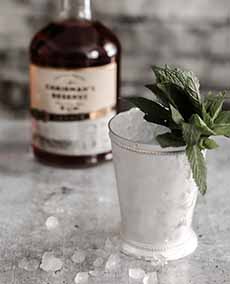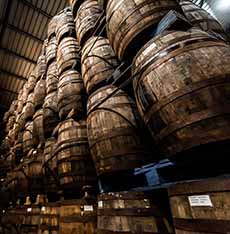St. Lucia Distillers Chairman’s Reserve Spiced Rum
|
Our Tip Of The Day, St. Lucia Distillers Chairman’s Reserve Spiced Rum, is a winner for these reasons and more: St. Lucia is a volcanic island nation situated in the eastern Caribbean: lush rainforests with waterfalls, dramatic mountains, volcanic beaches, reef-diving sites, fishing villages…and luxury resorts enabling vacationers to enjoy it all. But before the resorts, there was sugarcane. Sugarcane was brought to St. Lucia in the 1700s, likely from India (the history of sugar cane), and was used to contribute to the Caribbean’s thriving rum trade. By the 1950s however, demand for rum had lessened in favor of other spirits, and many Caribbean islands closed their distilleries. The last operating distillery on St. Lucia, St. Lucia Distillers Group, produces this wonderful spiced rum. Spiced rum is a tradition in St. Lucia. The island grows numerous spices, which are sold in the island’s open-air markets. Local families buy the spices and make their spiced rum at home, using a base of white rum. Every family has its own special recipe, and the recipes vary widely. At the end of the workday, everyone relaxes with a glass of it—whether at home or visiting a neighbor. There is a breadth of options in choosing spices, along with local fruits. They can include allspice, almonds, anise seeds, cinnamon, cloves, coconut, coriander, ginger, hibiscus, lemon and/or orange peel, mace, nutmeg, raisins, rosemary and vanilla pods. St. Lucians also add bois bande (pronounced bwah bond, “hard wood”), the natural bark of a tree by the same name. The bark is added as a bittering component (and it’s known in Santa Lucia as a natural aphrodisiac). It differentiates St. Lucian rum. St. Lucia spiced rum is often made with overproof rum, a distillate that contains more than 50% alcohol by volume (A.B.V.) The proof of a spirit is double the A.B.V. Hence, we’re looking at rum that is 100 proof or more. However, St. Lucia Distillers Chairman’s Reserve Spiced Rum is not overproof. It’s a conventional 40% A.B.V., 80 proof. > Check Out The Different Types Of Rum & The History Of Rum August 16th is National Rum Day. A blend of rums from both column and pot stills (photos #3 and #4), the rums are aged for an average of 5 years in used American oak casks (photo #5). They’re married after maturation, and then returned to oak for blending and final finishing—another six months. The end result is the flagship Saint Lucian rum: harmonious with well-rounded finesse, rich in color, aroma, and flavor. The nose has spicy vanilla from the oak, honey, and fruit. We think it smells like a heavenly dessert, inspiring thoughts of cake batter, crème brûlée, and vanilla custard, with a hint of orange). We can be happy simply by inhaling it. But of course, we also love to drink it. The palate: balanced with a mellow but complex mix of raisiny fruit, spice, and tobacco. The finish is long and oh-so-enjoyable. This is nothing like the Captain Morgan spiced rum which we were happy to drink in college. Everything has a time and place; but now that we’re an adult foodie, we want the real thing. So set aside your idea of what spiced rum is, and treat yourself to a bottle of a great one: St. Lucia Distillers Chairman’s Reserve Spiced Rum. Begin, of course, by procuring a bottle for yourself, and for gifts. In addition to the serving ideas above, here are some favorites from the St. Lucia Distillery team: DISCOVER MORE AT CHAIRMANSRESERVERUM.COM. |
|
|
|
|
||








